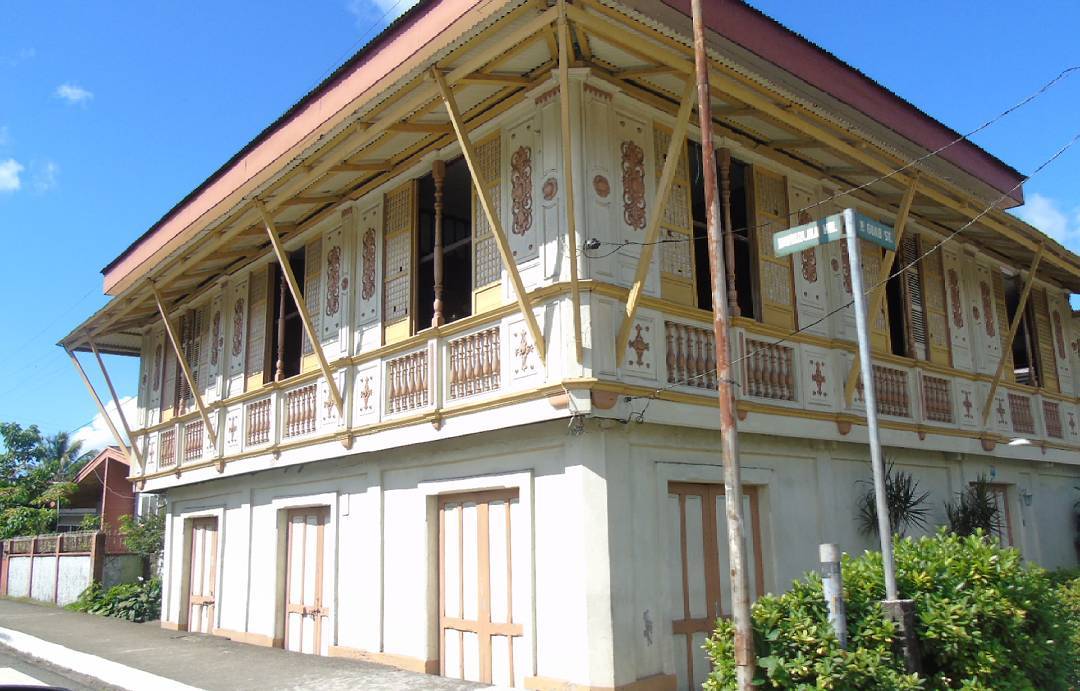

After the Second World War, construction of the houses declined and eventually stopped in favor of post-World War II modern architecture. The architecture was still used during the American colonization of the Philippines. The same architectural style was used for the Philippines' Spanish-era convents, monasteries, schools, hotels, factories, and hospitals, and with some of the American-era Gabaldon school buildings, all with few adjustments. An example of bahay na bato Philippine architecture

The 19th century was the golden age of the bahay na bato, when wealthy Filipinos built them all over the archipelago. The bahay na bato was popular among the elite or middle-class. Horses for carriages were housed in stables called caballerizas. Roof styles, were traditionally high-pitched, with later designs evolving to resemble the simpler East Asian hip-and-gable roof. The roof materials are either tiled, or thatched ( nipa, sago palm, or cogon), with later 19th-century designs featuring galvanization. The second floor is the elevated residential apartment, as it is with the bahay kubo.

The posts are placed behind Spanish-style solid stone blocks or bricks concealing storage rooms, cellars, shops, or other business-related functions. Its most common appearance features an elevated, overhanging wooden upper story (with balustrades, ventanillas, and capiz shell sliding windows) standing on wooden posts in a rectangular arrangement as a foundation. The bahay na bato fuses the native Austronesian bahay kubo form with influences from Spanish, Chinese, and later, early 20th-century American architecture, supporting the multicultural nature of Philippine history. Nalvo Norte, Luna, La Union.ĭon’t be a wasted soul, be “juan”derlust.Style of Filipino house architecture The Rizal Shrine in Calamba is an example of bahay na bato. “Bahay na Bato” collects P20 entrance fee for adults, while kids below four years old are admitted for free. If you are coming from San Fernando in La Union, there are direct jeepneys from San Fernando City to Luna.
#BAHAY NA BATO DRIVER#
Just tell the driver you are going to Bahay na Bato. Once in Luna, take another tricycle ride to Brgy. Walk your way to a 711 store that is near the Balaoan municipal hall. Bus stop is usually infornt of the Balaoan church. Inform the driver that you be dropped off the town of Balaoan. Ride a bus bound for Vigabn, Abra or Laoag. And by the way, there is also a small pool near the lawn area. Outside the house, more carved stone and wood artifacts can be seen – from animal formed stones to some naughty carvings that will make you grin. The thing I like the most is that it has a stunning panoramic view of beach.

The 2 nd floor have different display items like lamps, kitchen utensils, and more wood art pieces. The first floor also serve as a reception area where a mini-store is also put up. The ground floor of the 19th century bahay na bato is made up of either stone or brick walls enclosing 8x 8 or 10x 10wooden posts. These wooden posts go up to the second floor and are oftentimes. The flooring is made of palm-sized pebble stones – such a delight to the eyes. The bahay na bato was constructed out of brick and stone rather than the traditional bamboo materials. The house per se is a 2-storey construction with which the ground floor has 2 private rooms.


 0 kommentar(er)
0 kommentar(er)
